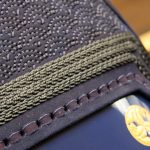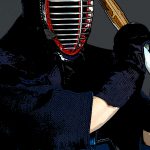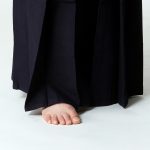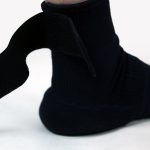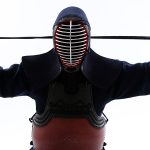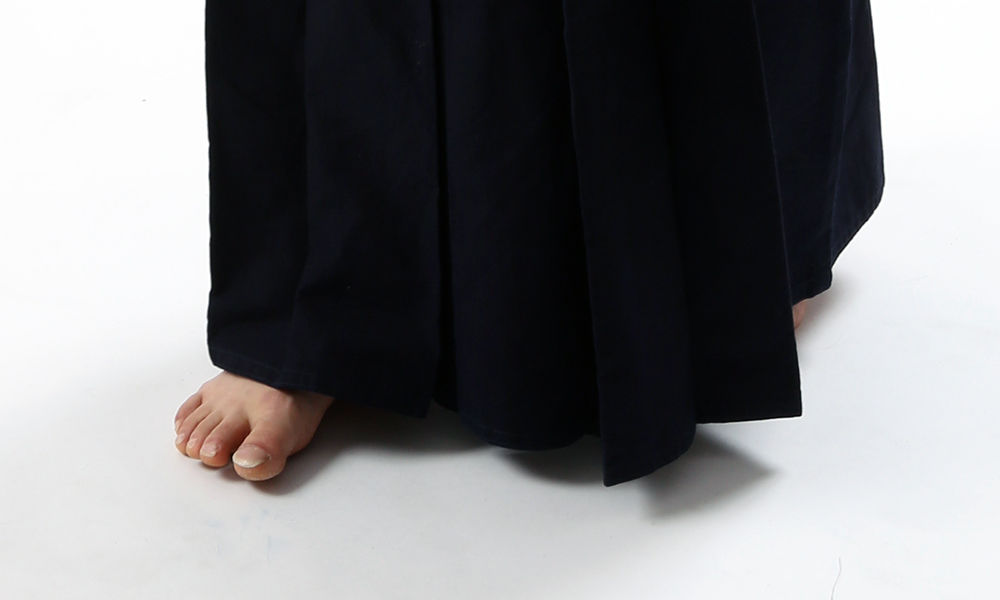
In kendo, you are often told not to put your left foot in front when you enter your kamae. There is no actual rule regarding that kind of position, and in fact there are many positions where your left side is in front, such as the hidari-jodan, hasso-kamae, and waki-gamae.
However in kendo you are almost always taught to draw your blade with your right hand, and all the positions are basically the same. This is derived from the samurai keeping their swords on their left. If the sword is kept on the left side, because of its length you would pull it out with your right hand. After you pull out your sword, your left hand would naturally be placed grasping the area near pommel. Since you would naturally have your right side in front, it would seem unnatural and counter-productive to try and reverse that.
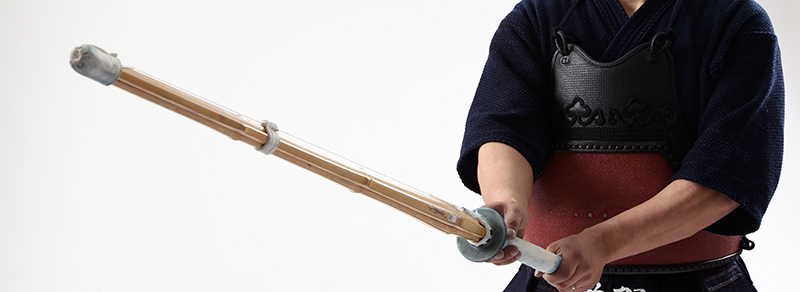
Kendo is a martial art derived from men fighting with real swords, so even with the shinai the way you hold it would be the same as with a real sword. That is why when you take your position your right hand is above your left hand holding the sword. Each person has a different physical make-up, so each person can take a position that suits them, but if you are going to take up kendo you must be able to strike your opponent and win. So your moves need to be smooth. That is why the right hand is in front, as it happens naturally.
If you have been playing with your left hand in front, you might want to go back and check your form. If you have been taking the same position for years it may have become stuck, so try your best to resolve it as early as possible. In order to win matches, it is important to establish your form early
Also, in kendo you are told to not place your left foot in front, but there is a reason for this too. It is not that a position with the left foot in front is bad per se, and there are kenshi of the older generation who place their left foot in front. This may give the impression that it doesn’t really matter, but there is a firm reasoning behind all this.
Putting your left foot in front is considered to be out of line with the basics, and against the trend of modern kendo. If you imagine the samurai of old using the sword it is easy to understand. You would use your right hand to pull out the sword which is placed at your left hip. As your right hand is naturally placed in front, your right foot would naturally be in front too. You left foot serves as an anchor to effectively push your body forward. Placing your right foot in front is also a very natural move.
In today’s kendo, the basic moves are all in a straight line, like men, kote and do-tsuki. In that case, it is most effective when you are striking with your left foot as the anchor. If you have been playing with your left foot in front, start even today and try and get back to the basic moves. It may be tough at first, but if you practice every day you would get used to the correct positioning.
Correct positioning ensures efficient moves, and it will help you win matches.
-Editorial Addendum-
A common counter-argument to the above opinion is that it shouldn’t make a difference if you reverse the kamae if you correctly apply kihon and listen to your teacher’s advice. This is often the line of thinking used by people who are left handed and feel that the right-handed “orthodox” kamae feels unnatural to them. Whilst in essence this is true it is important to consider that there are two arms at work in chudan kamae, what dexterity you gain by placing your dominant hand forwards is lost by your driving hand being replaced by a less coordinated twin. Either way you are going to have to make it up in one area or another so it is wise to go with the flow.
to pull out the sword which is placed at your left hip. As your right hand is naturally placed in front, your right foot would naturally be in front too. You left foot serves as an anchor to effectively push your body forward. Placing your right foot in front is also a very natural move.
In today’s kendo, the basic moves are all in a straight line, like men, kote, and do-tsuki. In that case, it is most effective when you are striking with your left foot as the anchor. If you have been playing with your left foot in front, start even today and try and get back to the basic moves. It may be tough at first, but if you practice every day you would get used to the correct positioning.






